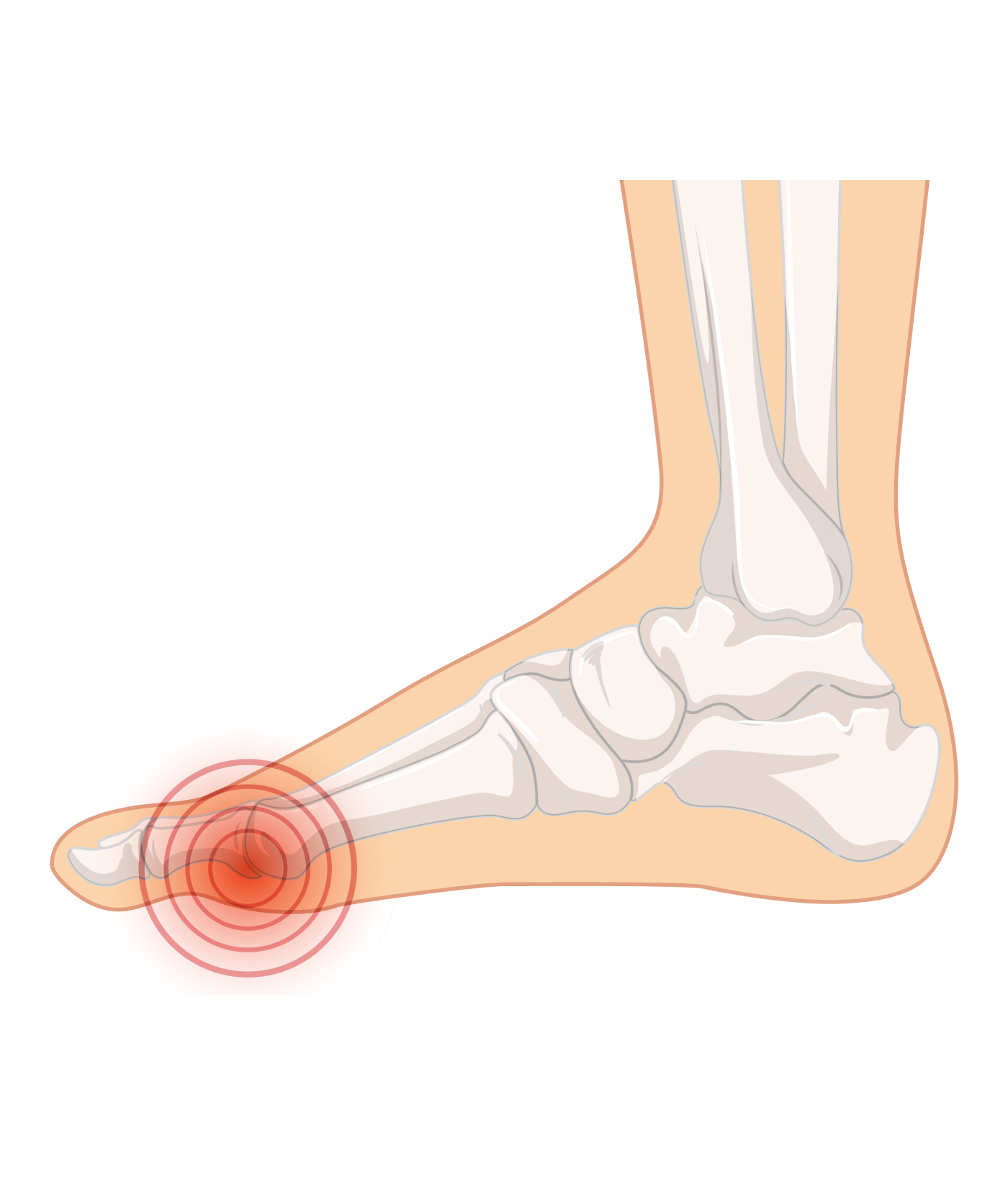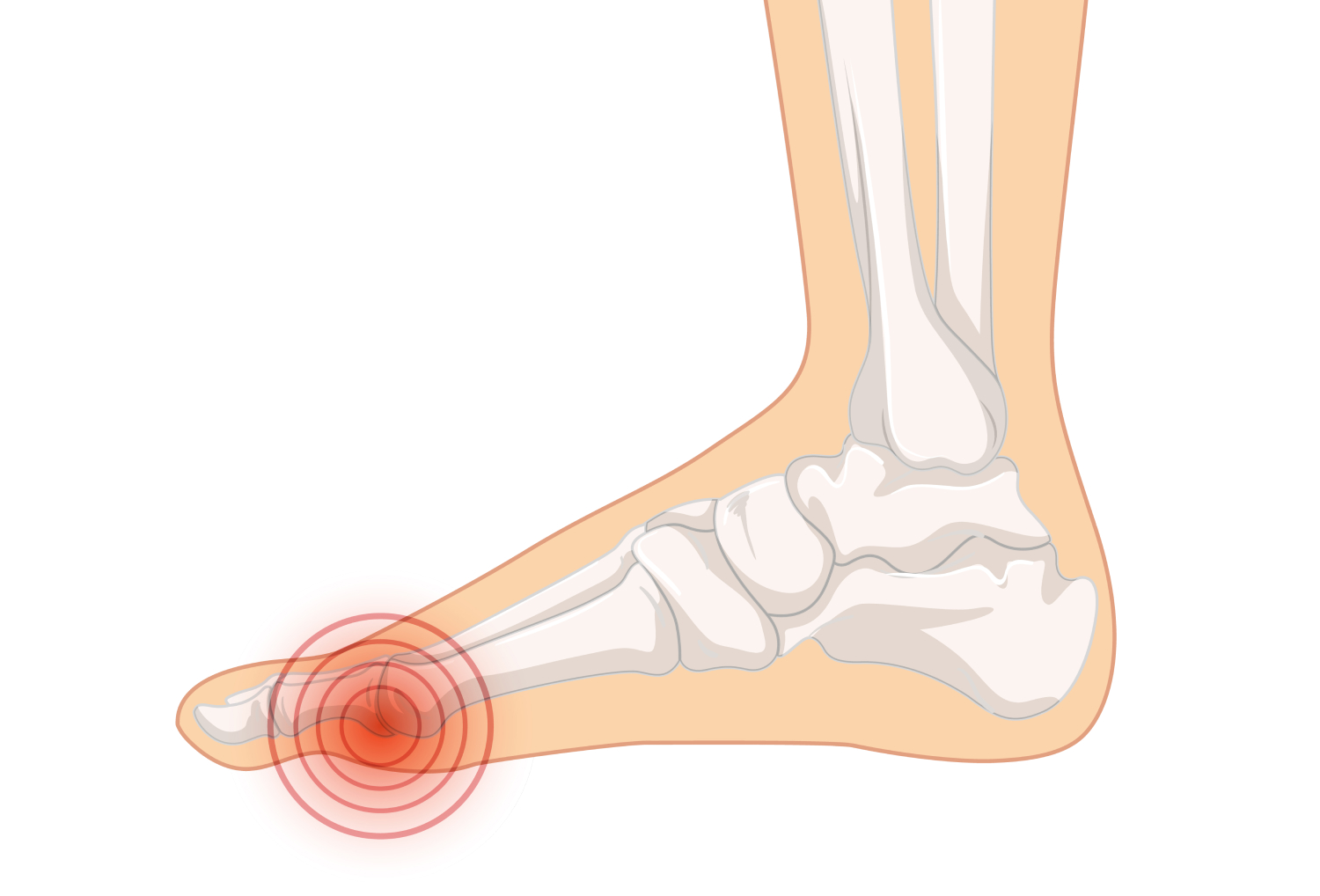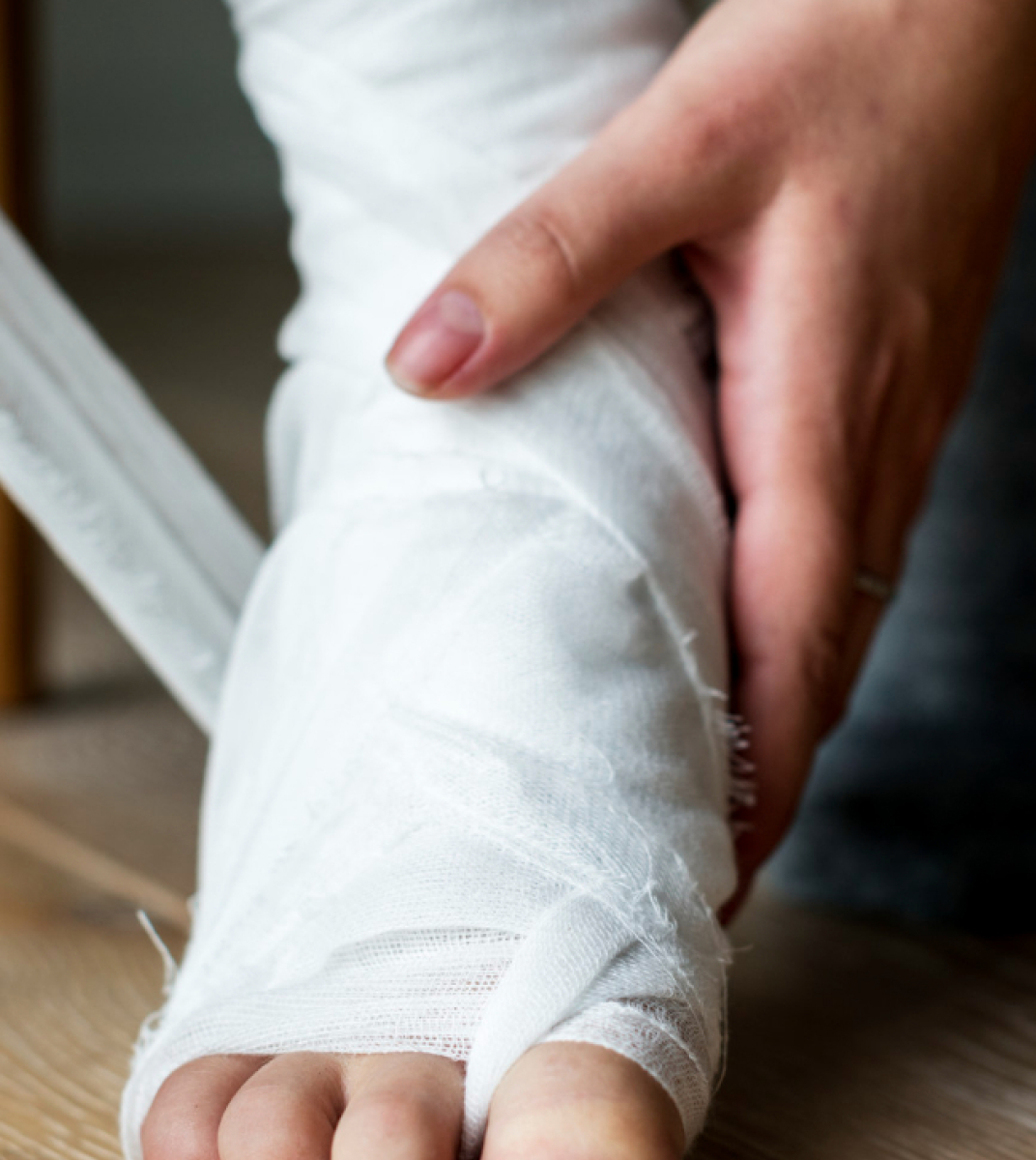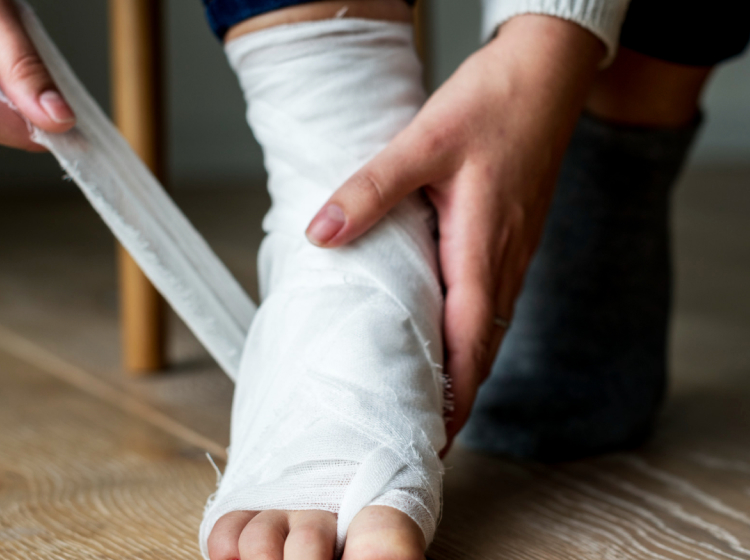Bunions Treatment In Singapore

Dr Wang Lushun
Senior Consultant Orthopaedic Surgeon
MBBS (Singapore)
MRCS (Edin)
MMed (Ortho)
FRCS (Ortho) (Edin)
- Walk without pain and discomfort again by treating your bunions
- Fellowship-trained orthopedic surgeon
- Internationally recognised, more than 1500 surgeries performed



What are Bunions?
Bunions are painful, bony bumps that form at the base of your big toe joint. They’re more common in women and often result from wearing tight or ill-fitting shoes. They may also be a symptom of conditions like arthritis, flatfoot, or genetic foot structure.
If left untreated and allowed to worsen, bunions can cause:
- Increased pain and discomfort, affecting daily activities
- Development of bursitis or inflammation around the joint
- Altered walking patterns, leading to further foot problems
- Degenerative joint changes, causing long-term damage
Signs You Have Bunions
Early detection and treatment of bunions in Singapore can help prevent further damage and complications to your foot health. If you notice the following, seek medical attention from your orthopaedic specialist :
Visible bump at the base of your big toe
This bump forms as the big toe pushes against the other toes, causing the joint to stick out.
Swelling, redness, or tenderness around the big toe
These are a result of the inflammation and pressure on the joint.
Restricted movement of the big toe
The affected joint can become stiff, limiting your toe's range of motion.
Calluses or corns between the toes
Constant friction between the big toe and the second toe may lead to the development of calluses or corns.
Walk without pain or discomfort again
with proper bunion treatment.
with proper bunion treatment.
Stride with confidence and improve your overall foot health while reducing the risk of additional damage and lasting health issues.
Getting proper treatment for your bunion provides you with relief and renewed mobility, so you
can enjoy your daily activities without pain or worry.


Am I A Candidate for Bunion Surgery?
Bunion surgery can help alleviate pain and improve foot function for the right candidate. During your consultation, your orthopaedic specialist will consider factors such as:
- Severity of the bunion: Larger or more painful bunions may require surgery to correct the deformity and alleviate discomfort.
- Non-surgical treatments’ effectiveness: If you’ve tried conservative treatments like padding, orthotics, or pain relievers without success, surgery might be the next step.
- Impact on daily activities: If your bunion’s affecting your ability to walk, work, or participate in physical activities, surgery could be a viable option.
- Your overall health: Your orthopaedic specialist will consider your general health, any pre-existing conditions, and your ability to recover from surgery before recommending it.
When Is The Best Time To Have Bunion Correction Surgery?
The best time to have bunion surgery depends on several factors, such as the severity of your bunion, your overall health, and how much your bunion is impacting your daily life. If non-surgical treatments aren't providing relief, and you're experiencing significant pain, mobility issues, or difficulty performing everyday activities, it may be the right time to consider surgery.
Keep in mind that taking time off work will help to ensure that you have an adequate recovery time.
The final decision for bunion surgery falls on your orthopaedic surgeon, who will assess your needs and circumstances before recommending treatment.
Can bunions be treated without surgery?
Yes, many non-surgical treatment options can help alleviate bunion pain and slow down progression. These include wearing wider, more comfortable shoes, using custom orthotics, applying ice or anti-inflammatory medication, and padding the bunion. However, these treatments won’t reverse the bunion or bony deformity; only surgery can address this malalignment.
How can I prevent bunions from forming?
To prevent bunions, choose footwear with a wide toe box that doesn’t squeeze your toes together. Opt for shoes with good arch support, and avoid high heels or tight shoes. Maintaining a healthy weight can also help reduce pressure on your feet.
Bunion Correction Surgery Recovery Process
| Recovery Period | What to Expect: |
|---|---|
| First 24 hours |
|
| First weeks after surgery (Week 0-2): |
|
| Several weeks after surgery (Week 2-6): |
|
| First few months after surgery (Week 6-12): |
|
| Several months after surgery (12 weeks onwards): |
|


Dr Wang Lushun
Senior Consultant Orthopaedic Surgeon
MBBS (Singapore)
MRCS (Edin)
MMed (Ortho)
FRCS (Ortho) (Edin)
Internationally Recognised & Double Fellowship-Trained Surgeon With Over 18 Years of Experience
- Bachelor of Medicine & Bachelor of Surgery (MBBS),
National University of Singapore - Member of The Royal College of Surgeons (MRCS),
Edinburgh, United Kingdom - Master of Medicine in Orthopaedic Surgery (MMed),
National University of Singapore - Fellow of The Royal College of Surgeons in Orthopaedics and Traumatology (FRCS), Edinburgh, United Kingdom
As a Senior Consultant Orthopaedic Surgeon and former Head of the Hip and Knee Division in Ng Teng Fong Hospital, he has won awards for superior patient outcomes (value driven), service quality and enhanced recovery programmes. His patients include current and former national athletes and sporting professionals.
Why Choose
Dr Wang Lushun?
Trusted
Leadership on Orthopaedic Advisory Boards
Skilful
Double Fellowships at Centres of Excellence
Experienced
Senior Consultant with Over 18 Years of Experience
Can I Use Medisave For Bunion Correction Surgery?
Yes, you can use funds from your Medisave to offset the cost of your treatment.
Reach out to us today to learn more about payment options.
Patient-Centred Orthopaedic Care
We are dedicated to your recovery and well-being. Every patient deserves the freedom that comes with active living. Whether you're an athlete sidelined by an injury or a weekend hobbyist desperate to return to your passion, our mission is to help you regain your mobility and independence.
Personalised Approach For Positive Outcomes
Our clinic prioritizes time dedicated to understanding each patient’s injuries and needs. Dr Wang strongly believes that personalised care & patient management will lead to better outcomes & positive experiences.
Minimally Invasive Techniques For Faster Recovery
Dr Wang’s extensive experience with minimally invasive procedures allows for less scarring, lower risk of complications and faster recovery compared to traditional surgical methods.
Aftercare Focused On Restoring Mobility & Well-Being
As an avid sportsperson, Dr Wang understands the time and patience required to regain mobility and return to active living. After your procedure is completed, Dr Wang will make sure your recovery is smooth and comfortable.
Insurance
We accept all patients, with or without insurance plans. Additionally, we are on the specialist panels of these Health Networks/Insurance Plans. Please contact us if you have any queries and we will be happy to assist you in checking with your insurance provider.
Our Clinic Locations
3 Mount Elizabeth, #13-14
Mount Elizabeth Medical Centre
Singapore 228510
820 Thomson Road, Mount Alvernia Hospital, #05-51, Medical Centre D, Singapore 574623
Frequently Asked Questions
Can bunions cause other foot problems?
Bunions can lead to other foot issues, such as hammertoes, bursitis, and metatarsalgia (pain in the ball of the foot). Additionally, the altered walking patterns caused by bunions can result in pain and problems in other parts of the body, like the knees, hips, and lower back.
Can children develop bunions?
Yes, children can develop bunions, often due to inherited foot structure or flat feet. Treatment for children typically involves non-surgical options, such as orthotics, padding, and wearing appropriate footwear.
Will my bunion return after surgery?
While bunion surgery is generally successful, there’s a small chance of recurrence if the underlying causes aren’t addressed. To minimize the risk of recurrence, follow your surgeon’s recommendations and adopt preventive measures, such as wearing appropriate footwear and using orthotics if needed.
What causes bunions to develop?
Bunions develop as a result of an imbalance in the foot’s structure, causing the big toe to lean toward the other toes. This misalignment can be caused by genetic factors, arthritis, or wearing ill-fitting, tight shoes. Prolonged pressure on the joint can lead to the formation of a painful, bony bump.
Are there any risks or complications with bunion surgery?
As with any surgery, bunion surgery carries some risks, including infection, bleeding, nerve damage, and anaesthesia complications. However, these risks are generally low, and your surgeon will discuss them with you before the procedure.
Is there a connection between bunions and arthritis?
Arthritis can contribute to the development of bunions, especially in people with rheumatoid arthritis or osteoarthritis. The inflammation and joint damage caused by arthritis can weaken the foot’s structure and cause the big toe to drift towards the other toes, leading to a bunion.